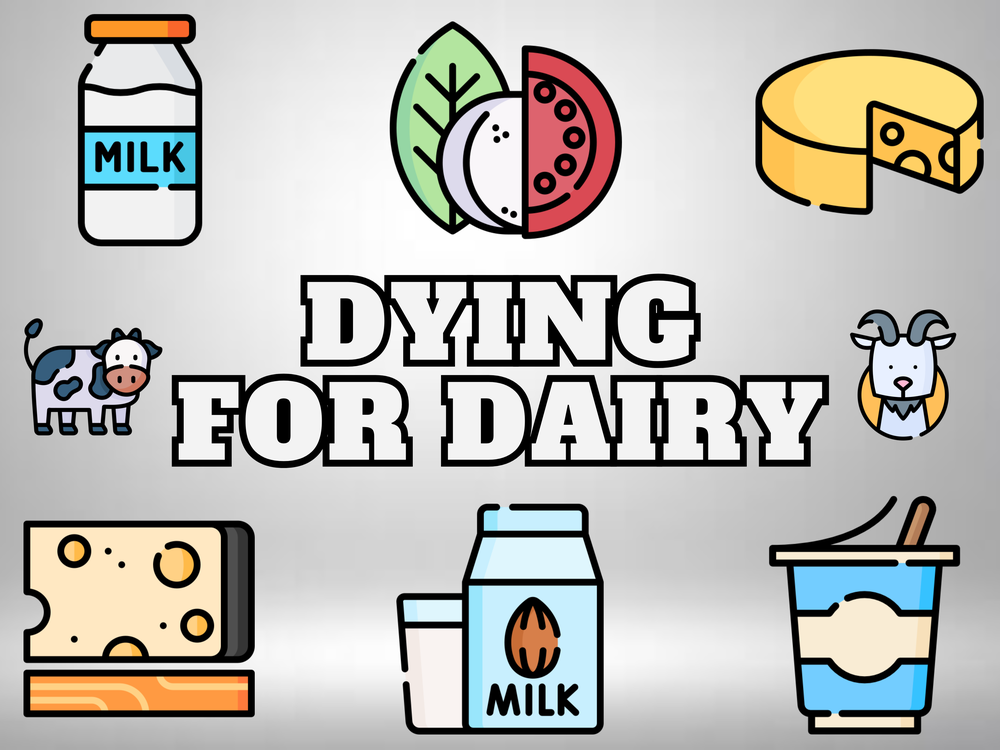
Introduction
Got Milk? Or do you really need it? Dairy is a somewhat important food group, but often overstated. How it got it's own section of MyPlate is just really good marketing and lobbying by the dairy industry. You don't need to have a glass of milk each day for strong bones; there are other good sources of calcium out there.
Even so, dairy is still a very healthy class of foods if you know what you're looking for. There's a fairly wide range of products, from milks to cheeses, all with varying nutrient levels, both macro and micro. I've also included some dairy free alternatives on this list as well for comparison, such as almond and coconut milks.
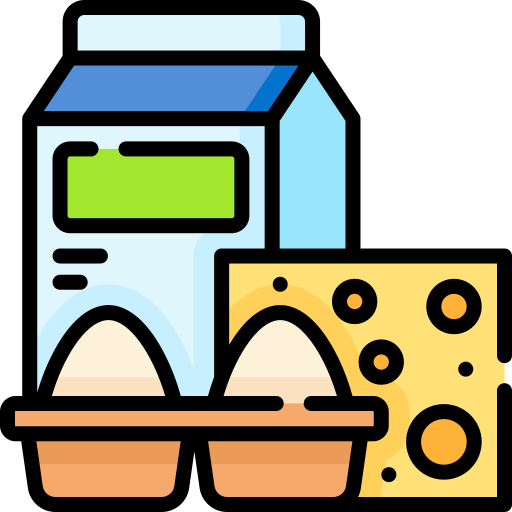

Other Posts in this Series

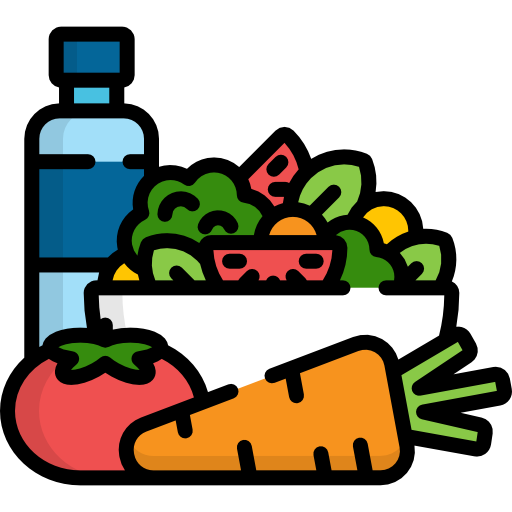
Contents
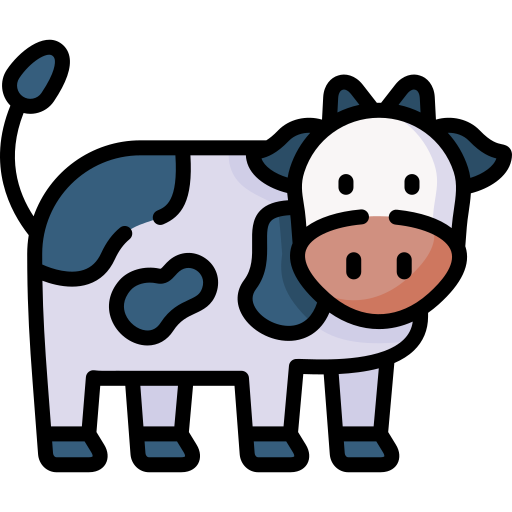

Why yes, I am starting off the dairy list with a non-dairy alternative. Almond milk is a lactose free, low calorie milk alternative, made by blending almonds soaked in water. Compared to skim milk, almond milk is lower in calories, carbs, and protein, and higher in fat. There's about as much fat in a glass of almond milk as 1% milk, but almond milk is missing all of the carbs and protein, thus it's lower in calories.
Almond milk does technically contain more calcium than standard cow's milk, but that's only because it's fortified with it. Getting nutrients from whole food sources first and foremost is more important than supplementation or fortification, as synthetic forms of vitamins and minerals are often significantly less bioavailable than naturally occuring forms found in the food itself. Almond milk is also sometimes fortified with vitamins A, D, and E.
I'm not saying don't take a multivitamin (I do), but those should be supplemental to nutrients from whole foods, not in place of them. What almond milk does have more of though is vitamin E, as almonds are one of the best sources, though sometimes extra vitamin E is added to products.
There are 2 main problems with almond milk: added sugar, and artificial additives. As for the former, you can easily get around this by purchasing unsweetened almond milk. These typically come in 2 varieties: original (unflavored), and vanilla. Be very careful of sweetened almond milks like chocolate or vanilla, as some can contain a whopping tablespoon of added sugar in just one cup.
As for the latter, this one is harder to get around. Most commercial almond milks contain a lot of gums and preservatives. You can either opt for a more expensive brand without that junk, or make your own Homemade Plant Based Milk. This can apply to more than just almonds; try homemade oat or peanut milks!
Serving Size: 1 cup (240 g)
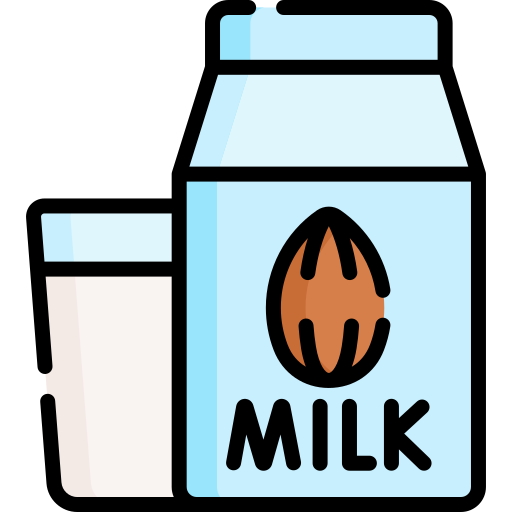
Blue cheese is one of the most distinct cheeses both in appearance and flavor. Its signature blue or green veins come from the addition of specific strains of Penicillium mold, which give it that sharp, tangy taste and creamy yet crumbly texture. Nutritionally, a 1 oz (28 g) serving of blue cheese contains about 100 calories, 8 g of fat, and 6 g of protein. Like most cheeses, it’s a good source of calcium and vitamin B12, and also contains notable amounts of phosphorus and selenium. Its strong flavor means a little goes a long way, making it a great way to add richness and depth to dishes without needing much.
Serving Size: 1 oz (28 g)
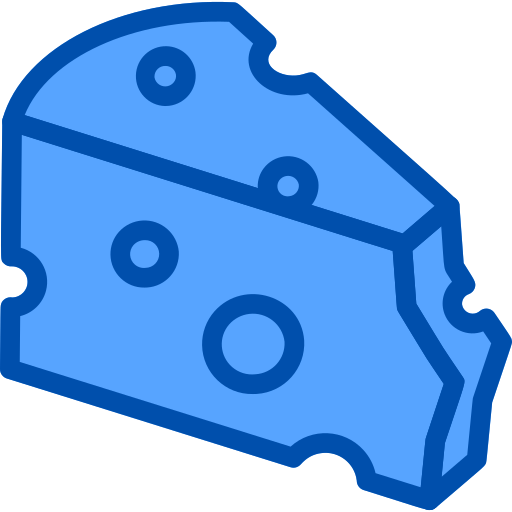
Butter is almost entirely fat, consisting of about 85% fat and 15% water. This does make it slightly lower calorie than any type of oil, which is 100% fat. The fat of butter is comprised mostly of saturated fats, which may be considered heart-neutral from dairy based sources, according to more recent research. Butter also has a notable content of vitamin A, as well as vitamin E, and it comes in salted and unsalted varieties.
Overall, compared to other cooking fats, butter certainly ranks better than seed oils, but not quite as nutritious as olive or coconut oils, the oils I choose to cook with instead. It's fine to cook with on occasion, but just be mindful of how much you're using, as to not overdo it on calories. My only real use of butter is in baking, like cookies and brownies, which will regularly call for a whole stick (or more) of butter (ouch). Butter is slowly making a nutritional comeback, but don't expect the excessive amounts of butter found in baked goods and mashed potatoes to ever be considered healthful.
Serving Size: 1 tbsp (14 g)
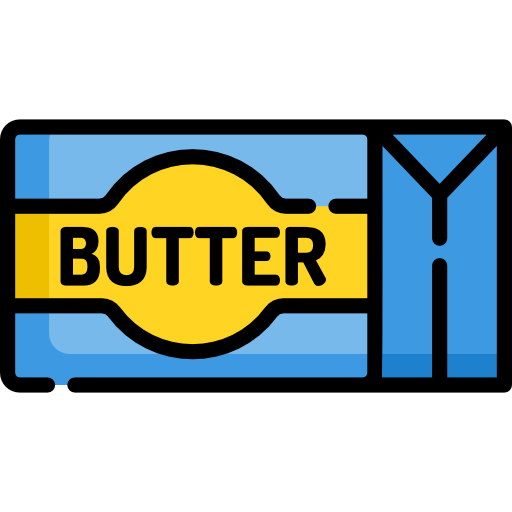
Casein protein powder is the other dairy protein powder, with the main one being whey. Casein is lesser known, but actually more abundant in milk. About 80% of the protein in a glass of milk is casein, whereas the remaining 20% is whey. Casein is an extremely lean and convienent protein source, and mixes great into baked goods, yogurt, and oatmeal. As I found in Water Absorption of Different Flours, casein acts more like a typical flour, absorbing a lot of moisture and forming a dough when mixed into water. This makes it a good high protein flour replacement in baking, but bad for a protein shake.
Serving Size: 1 scoop (30 g)
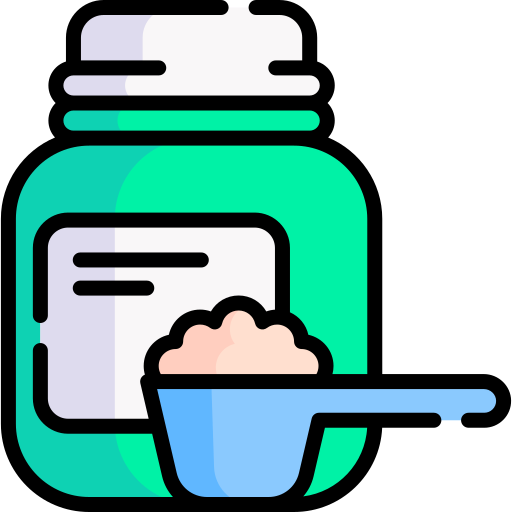
Cheddar is the first of the cheeses on this list. A standard ounce (28 g) of cheddar cheese contains about 9 g of fat and 7 g of protein in 114 calories. This makes it a decent way to add more fat and protein to your meal. It can be quite high in both saturated fat and sodium though if those are things you're looking to limit.
Cheddar is a decent source of vitamins A and B12, as well as calcium, phosphorus, and selenium. It can come in 2 main forms, either a block or pre-shredded, and often also has low fat or fat free varieties, which contain proportionally more protein for fewer calories.
Serving Size: 1 oz (28 g)

Coconut milk is our other dairy free milk being discussed, with the other being almond milk. Canned full fat coconut milk is extremely high in fat and calories, fairly low in protein, and contains some natural (and sometimes added) sugars. 51 g of its total 57 g of fat is saturated, and it contains no calcium or vitamin B12. There's also canned low fat coconut milk.
So what's coconut milk good for then? Well you can just drink it; it's high fat and fiber content would make it very satiating. But more often, it's used as a heavy cream replacement for vegan dishes such as curries, as these canned coconut milks are extremely thick like heavy cream. Believe it or not, cococnut milk contains less fat than heavy cream, and can also be whipped to make a dairy free whipped cream just like standard heavy cream.
The absurdly high saturated fat content of coconut is much better than it seems, however. The saturated fat of coconut milk is made up of Medium-Chain Triglycerides. MCTs are unique from other saturated fats, in that they're shown to be burned more like carbohydrates, but without the spike in glucose and secretion of insulin. There's a reason why many healthier baking recipes simply swap butter for coconut oil.
If you're looking for more of a milk substitute than a cream substitute, there is also original coconut milk, just like original almond milk to be used in your protein shakes and smoothies. These more 'milk-like' coconut milks are signifcantly watered down, leading to a similar nutritional profile to almond milk: 40 calories, 4 g fat, 2 g carbs, and 0 g protein per 1 cup (240 g) serving. Note that the nutrition facts below are for canned (thick) coconut milk, not bottled (thin) coconut milk. There is a big difference between the two.
Serving Size: 1 cup (240 g)
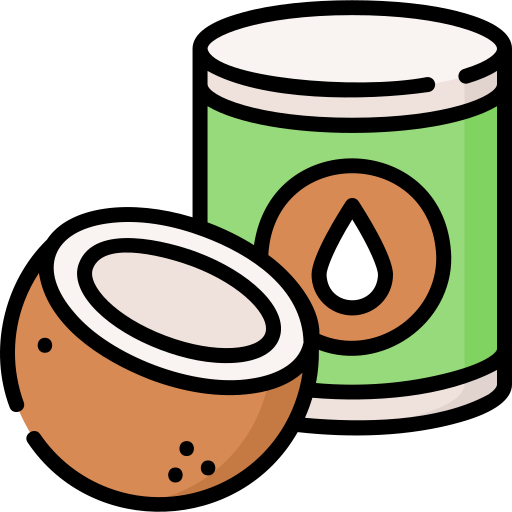
Ah the humble cottage cheese. Either you love it, or you've never really had it. Cottage cheese comes in full fat (4%), low fat (1%), and nonfat (0%) varieties, but the nutrition facts below will only consider plain nonfat cottage cheese. There's also flavored cottage cheese versions, but stay far away from those, as those peach and pineapple flavored cottage cheeses are loaded with added sugar.
Cottage cheese is one of the cheapest sources of lean protein. In just 80 calories, cottage cheese packs 12 g of protein, levels that aren't even archived by most protein bars. While it's 'curdy' texture leads people to often dismiss it, you can easily blend the cottage cheese for a smooth, yogurt-like product. Cottage cheese is essentially Greek yogurt without the tangy flavor, and without the probiotics. As for micronutrients, cottage cheese is a rich source of riboflavin, vitamin B12, phosphorus, and selenium. Do note that it can be quite high in sodium though.
Cottage cheese has a myriad of uses, both in savory and sweet foods. For the former, cottage cheese can be used as a lower calorie, lower fat, higher protein substitute for creamy products, such as heavy cream, mayonnaise, sour cream, or ricotta. In sauces, spready, and dips, great uses for cottage cheese are in the following:
Moving on to sweet uses, cottage cheese and yogurt can be used pretty much interchangeably in both raw and baked uses. Just keep in mind that cottage cheese is salty, and yogurt is not, so you may need to add more or less salt. The following are all great healthy uses for cottage cheese:
Serving Size: 1/2 cup (113 g)
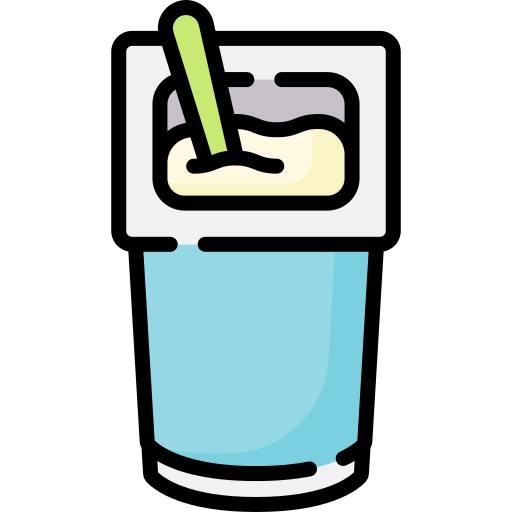
Whole milk cottage cheese is virtually identical to non fat cottage cheese in nearly every way. The only notable difference is the fat content. Therefore, full fat cottage cheese is naturally higher calorie than nonfat.
Serving Size: 1/2 cup (113 g)

Cream cheese is often mentioned alongside butter; probably because they're both typically put on bagels. Compared to butter, cream cheese has about half the calories, as it contains more water and a small amount of protein. Cream cheese is still very fatty though, and about half its fat is saturated, but it does come in full fat and reduced fat variations. Fat free cream cheese also apparently exists, but I've never seen it in the U.S., only in European cooking YouTube videos.
Cream cheese has a next to nothing micronutrient profile. It's highest nutrient is vitamin A, which is significantly lower than that of butter. Personally, I never use cream cheese. I normally use the healthier substitution of cottage cheese or greek yogurt instead. Both of these have significantly more protein and vitamin B12 for signifcantly fewer fat and calories. For example, check out my Sugar Free Peanut Butter Cheesecake with cottage cheese, or my No Bake Cheesecake Bars with greek yogurt.
Serving Size: 1 tbsp (15 g)

Outside of mozzarella, feta, tied with goat cheese is our lowest fat cheese on the list, with cheddar, parmesan, and swiss all having a few more grams per ounce. It is however the saltiest cheese, with the exception of parmesan. Feta is a good source of B vitamins, where just 1 oz (28 g) contains 18% and 20% DV of vitamins B2 and B12, respectively. At only 4 g per serving, feta is one of the lower protein cheeses however. Typically it comes in the standard block or crumbles, but you can also get fat free feta cheese for more protein.
Feta might just be my favorite cheese from a flavor standpoint. I always crumble it over my large base salad in my refrigerator in order to make myself a Greek salad. Feta is great in Mediterranean inspired dishes, like in a Mediterranean Sweet Potato Salad, Spinach & Mushroom Scrambled Eggs, Lemon Feta Chicken Bowls, and Mediterranean 3 Bean Salad. And of course, who can forget about the Viral Baked Feta Pasta, where a whole block of feta is the star ingredient.
Serving Size: 1 oz (28 g)

Nutritionally and culinarily, goat cheese and feta cheese are fairly similar, containing nearly identical amounts of calories and fat, as well as serving similar purposes. While goat cheese does have a bit more protein and half the sodium of feta, it also has a mere fraction of the calcium and vitamin B12. Though goat cheese is one of the better cheese sources of the mineral copper.
I normally opt for feta, though you could swap it for goat cheese (or vice versa) in nearly every scenario. Goat cheese is my go to cheese for a salad at a restaurant, or maybe just try some simple apple slices with goat cheese for a snack. Or for a goat cheese forward dinner, check out my Pesto Goat Cheese Mac & Cheese.
Serving Size: 1 oz (28 g)

Plain Greek yogurt is the absolute king of dairy. It can come in a variety of fat contents, from whole milk (5%), to reduced fat (2%), and nonfat (0%). For the nutrition facts below, I will be just looking at nonfat Greek yogurt, but know that the only nutritional difference between them is the addition of some more fat and calories. Vitamin and mineral contents between fat varieties are largely the same. Just make sure to stay far away from any flavored yogurts, such as vanilla or strawberry, as these are loaded with added sugar. Plain all the way!
So why do I call Greek yogurt the king of dairy? Because it's high in protein, cheap, lean, tastes great, and very versatile. Greek yogurt has a higher protein to calorie ratio than both 93% lean ground beef and skinless chicken thighs. For under $4 for 5 servings of 17 g of protein with no cooking required, it's really hard to beat Greek yogurt. For some whole food fats, you can either opt for whole milk Greek yogurt, or add some natural nut butter or ground flaxseed to nonfat yogurt.
Greek yogurt is also a fantastic source of many micronutrients. These include riboflavin (vitamin B2), pantothenic acid (vitamin B5), vitamin B12, calcium, phosphorus, and selenium. If you get whole milk yogurt, it can also be a good source of C15. Greek yogurt is also a great fermented food, making it great for your gut microbiome. Greek yogurt has one of the highest probiotic counts of any of the fermented foods. The fermentation of dairy also breaks down the milk sugar lactose, making Greek yogurt fairly tolerable for those with lactose intolerance.
Yogurt is most often thought of as a sweet food, but there are many savory uses for it as well. Greek yogurt can easily replace sour cream, mayonnaise, heavy cream, or cream cheese for significantly fewer calories and fat. Below are some great savory uses for Greek yogurt:
And of course, Greek yogurt can be uses in sweet breakfasts and healthier desserts to boost protein content, lower carbs and fat, and keep you feeling satiated throughout the day. Yogurt keeps baked goods moist and rich without the need for butter or cottage cheese fairly interchangeably; though do note the differences in sodium. You may need to add/remove salt based on your substitution:
Serving Size: 3/4 cup (170 g)

Whole milk Greek yogurt is virtually identical to non fat Greek yogurt in nearly every way. The only notable difference is the fat content. Therefore, full fat Greek yogurt is naturally higher calorie than nonfat.
Serving Size: 3/4 cup (170 g)
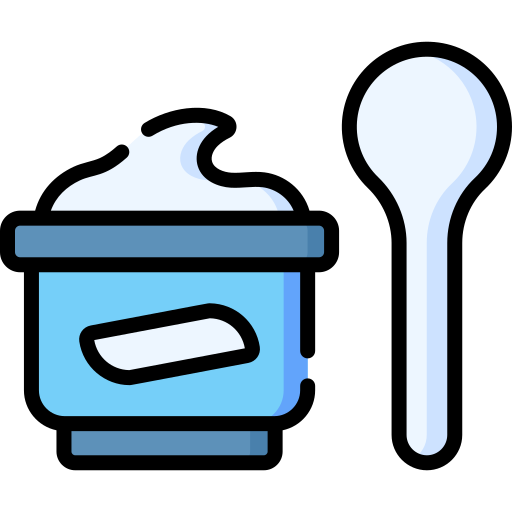
Kefir is a fermented milk drink that's almost essentially drinkable yogurt. It can come in both full fat (3%) or low fat (1%), and can also be either plain or flavored. Flavored kefirs are typically lowfat but filled with added sugar. So stay away from any flavored kefirs like strawberry, blueberry, or peach.
Assuming you're only looking at plain varieties, kefir is a very healthy addition to your diet. It's a good source of protein, fat (depending on the fat content you buy), and probiotics, while having no added sugar. Because of the fermentation, not only is kefir fairly friendly to those with lactose intolerance, but it also has one of the highest probiotic counts of any foods, at about 25 to 30 billion CFUs.
Kefir is a great natural source of many B vitamins, such as riboflavin (B2), pantothenic acid (B5), and vitamin B12. Being a milk product, it's also high in calcium, but also phosphorus, selenium, and zinc. Additionally, kefir is also typically fortified with vitamins A and D.
I occasionally buy kefir, as it's a good way to switch it up from my go-to greek yogurt. When I do get it, normally I make a simple Probiotic Chocolate Kefir with no added sugar. You can also swap out the greek yogurt and skim milk for kefir in my Copycat Chobani Yogurt Drink or Copycat Core Power Protein Milkshake for some extra good gut bugs!
Serving Size: 1 cup (240 g)
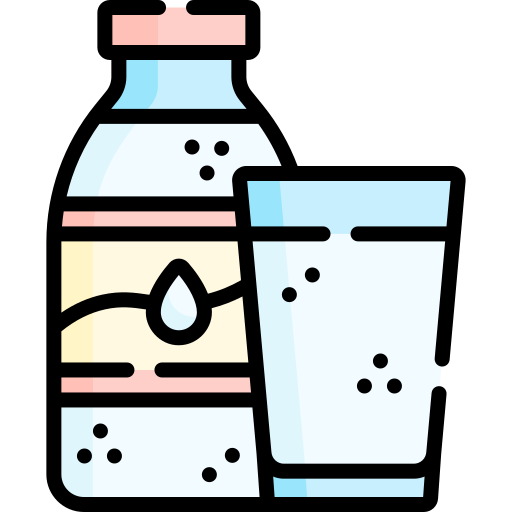
Everyone knows and loves milk. Okay maybe not everyone loves milk. Standard cow's milk comes in 4 main varieties: whole milk (3% fat), 2%, 1%, and skim milk (0 %). The only difference between these 4 different types of milk are just the amounts of fat. Whole milk is the highest in fat and calories, skim is the lowest, and 2% and 1% fall somewhere in between. For the nutrition facts below, I will only be considering skim milk, though protein, vitamin, and mineral contents are virtually identical across all fat contents.
As with many other dairy prooducts, milk is high in vitamins B2, B5, and B12, while also typically being fortified with vitamins A and D. Of course, milk is probably most known for its calcium content, which it excels at. Just 1 cup (240 g) of skim milk contains 293 mg (22 %), a number only beat out by kefir. In addition to calcium, milk is a good source of the minerals phosphorus, selenium, and zinc. Adding some milk may be a very good way to fill in some nutritional holes in your diet (assuming you're not lactose intolerant).
Not only are all fat varieties of cow's milk virtually interchangeable, but you can also swap almond milk for cow's milk (or vise versa) will little to no changes. For example, many of my recipes call for either skim milk or unsweetened vanilla almond milk, which is really just whatever I'm feeling that particular day.
I hope this goes without saying, but please stay away from flavored milks, like chocolate or strawberry milks. Most of these can contain nealry 2 tablespoons of added sugar just in just a measly serving, something you can chug in about 10 seconds. Side note - did you know that Nesquik has a protein shake? Well don't buy it, it has nearly as much added sugar as protein.
As for uses for milk, you can of course just drink a glass of it, or use it as a base for a smoothie or protein shake. You can make high protein copycat drinks like Chobani Yogurt Drink or Core Power Protein Milkshake. Or even make a High Protein Hot Chocolate or Unsweetened Hot Cocoa. Finally, milk is great to thin out your yogurt or oatmeal.
Serving Size: 1 cup (240 g)
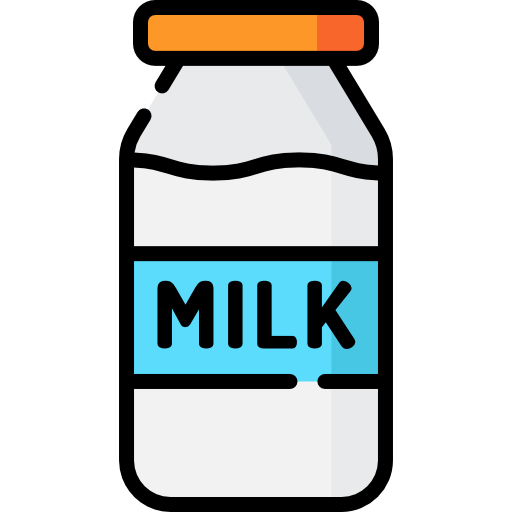
Whole milk is virtually identical to skim milk in nearly every way. The only notable difference is the fat content. Therefore, full fat milk is naturally higher calorie than skim.
Serving Size: 1 cup (240 g)
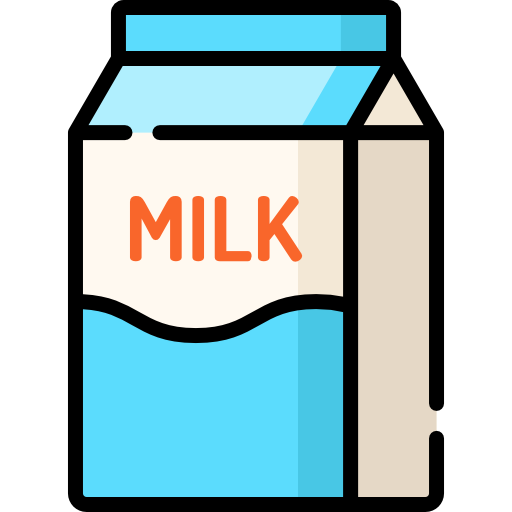
Okay we're back to cheese. Mozzarella is a good source of fat, protein, vitamin B12, calcium, phosphorus, and selenium. Being a cheese, it's significantly lower in lactose than milk and other dairy products. Compared to other cheeses like cheddar, feta, goat, parmesan, and swiss, mozzarella is on the higher end in calcium, about middle of the road in sodium and calories, and the low end in fat and vitamin B12.
Mozzarella cheese is kinda underrated. Gram for gram, low moisture, part-skim mozzarella cheese has more protein and less fat than 80% lean ground beef. Just like with cheddar and feta cheeses, there's even a fat free version if you're cool with that, which contains 9 g of protein in just 45 calories, which is more protein than even chicken breast.
When I think of mozzarella, 2 main forms come to mind: fresh and shredded. Fresh mozzarella has a higher moisture content (more water), and is typically used in a caprese salad and Neapolitan pizza. On the other hand, shredded (or block) mozzarella is low moisture, and is probably the main form of mozzarella you consume. From pizza to chicken parm to eggplant parm, shredded mozzarella cheese has a myriad of uses. For the nutrition facts below though, I will be using low moisture, part-skim, shredded mozzarella cheese, as it's probably the most common form you or I eat.
Serving Size: 1 oz (28 g)
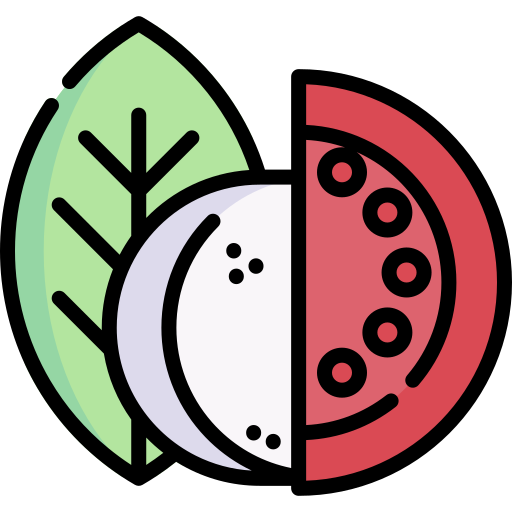
Parmesan cheese (or 'pahm') is higher in protein and sodium than most of the other cheeses, while ranking about average in fat content. Like cheddar, feta, goat, mozzarella, and swiss, parmesan is a good source of calcium, phosphorus, selenium, zinc, and vitamin B12. While being the highest calorie cheese, parmesan is also the highest protein cheese. Unless you count cottage cheese as a cheese, which would be kinda weird. Parmesan cheese comes in 2 main forms: the 'real stuff' and 'fake stuff'. You can also get parmesan as a block or bag of shredded cheese.
As for uses, my most common form of parm is the fake shaker bottle stuff. I use parmesan cheese all the time in my homemade breading mixes, such as in Gluten Free Chicken Fingers, Parmesan Crusted Zucchini Wedges, Gluten Free Shrimp Oreganata, and Italian Breaded Chicken. Parmesan cheese is also the classic cheese used in pesto, and you can check out all my pesto recipes here, such as Creamy Pesto Dip and Pesto Classico.
Serving Size: 1 oz (28 g)
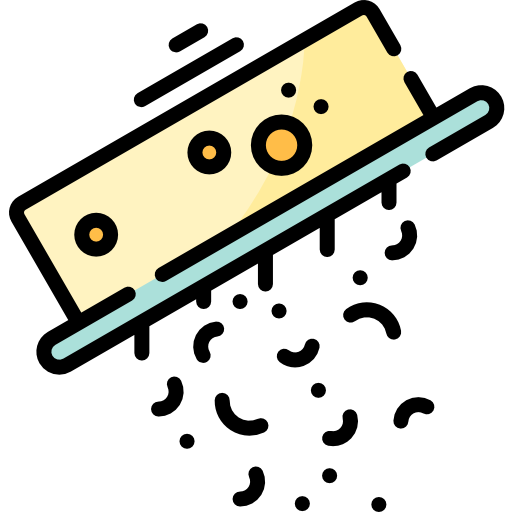
We've come to out favorite holey cheese: swiss. While I've never personally been a big fan of swiss, I cannot deny it's healthy benefits. Notable, swiss is the highest cheese in vitamin B12 by a country mile. Swiss cheese's vitamin B12 content is nearly double that of feta, the next highest cheese. Only milk and greek yogurt contain more B12 than swiss per serving.
Swiss is also a very low sodium cheese, as it contains the least amount as compared to cheddar, feta, goat, mozzarella, and parmesan. Finally, compared to the other cheeses, swiss ranks about middle of the road in calcium, and on the higher end in protein, fat, and calories.
Serving Size: 1 oz (28 g)
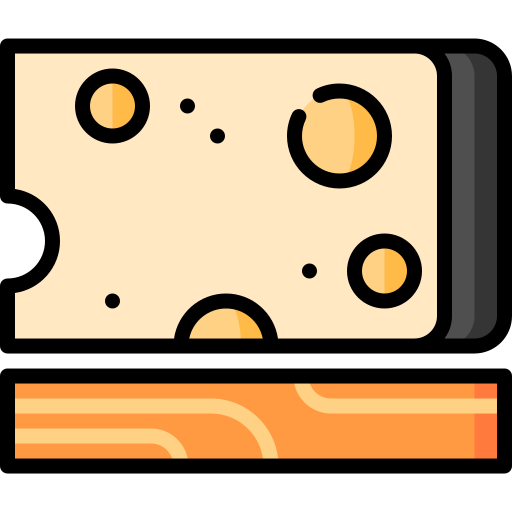
Whey protein powder is the main dairy protein powder, with the other one being casein. Whey is well known, but actually less abundant in milk. About 80% of the protein in a glass of milk is casein, whereas the remaining 20% is whey. Whey is an extremely lean and convienent protein source, and mixes great into no bake snacks, yogurt, and oatmeal. As I found in Water Absorption of Different Flours, whey does not bind to water very well. It acts more like sugar; easily dissolving into liquids. This makes it great for protein shakes. However, when baked, whey tends to make protein desserts dry, so it's best to either bake with casein instead, or have a lot of moisture in the batter.
Serving Size: 1 scoop (30 g)

Nutritional Comparison
Scroll to the right to read information about every variation

References
This post may contain affiliate links
Got Milk? Or do you really need it? Dairy is a somewhat important food group, but often overstated. How it got it's own section of MyPlate is just really good marketing and lobbying by the dairy industry. You don't need to have a glass of milk each day for strong bones; there are other good sources of calcium out there.
Even so, dairy is still a very healthy class of foods if you know what you're looking for. There's a fairly wide range of products, from milks to cheeses, all with varying nutrient levels, both macro and micro. I've also included some dairy free alternatives on this list as well for comparison, such as almond and coconut milks.


Other Posts in this Series
- Let's Meet The Meats
- I'm Nuts For Nuts
- I See Seeds In Your Future
- Beans Beans The Musical Fruit
- Going Bananas For Bananas
- Lettuce Turnip The Beet
- I'm Hooked On Fish
- A Grain Of Truth
- I'm Dying For Dairy


Contents
- Almond Milk
- Blue Cheese
- Butter
- Casein Protein Powder
- Cheddar Cheese
- Coconut Milk
- Cottage Cheese (Nonfat)
- Cottage Cheese (Whole Milk)
- Cream Cheese
- Feta Cheese
- Goat Cheese
- Greek Yogurt (Plain Nonfat)
- Greek Yogurt (Plain Whole Milk)
- Kefir
- Milk (Skim)
- Milk (Whole)
- Mozzarella Cheese (Low Moisture Part-Skim)
- Parmesan Cheese
- Swiss Cheese
- Whey Protein Powder
- Nutritional Comparison


Why yes, I am starting off the dairy list with a non-dairy alternative. Almond milk is a lactose free, low calorie milk alternative, made by blending almonds soaked in water. Compared to skim milk, almond milk is lower in calories, carbs, and protein, and higher in fat. There's about as much fat in a glass of almond milk as 1% milk, but almond milk is missing all of the carbs and protein, thus it's lower in calories.
Almond milk does technically contain more calcium than standard cow's milk, but that's only because it's fortified with it. Getting nutrients from whole food sources first and foremost is more important than supplementation or fortification, as synthetic forms of vitamins and minerals are often significantly less bioavailable than naturally occuring forms found in the food itself. Almond milk is also sometimes fortified with vitamins A, D, and E.
I'm not saying don't take a multivitamin (I do), but those should be supplemental to nutrients from whole foods, not in place of them. What almond milk does have more of though is vitamin E, as almonds are one of the best sources, though sometimes extra vitamin E is added to products.
There are 2 main problems with almond milk: added sugar, and artificial additives. As for the former, you can easily get around this by purchasing unsweetened almond milk. These typically come in 2 varieties: original (unflavored), and vanilla. Be very careful of sweetened almond milks like chocolate or vanilla, as some can contain a whopping tablespoon of added sugar in just one cup.
As for the latter, this one is harder to get around. Most commercial almond milks contain a lot of gums and preservatives. You can either opt for a more expensive brand without that junk, or make your own Homemade Plant Based Milk. This can apply to more than just almonds; try homemade oat or peanut milks!
------------------------------------------
Total Fat: 2.3g (2 %)
Sodium: 173mg (7 %)
Total Carbohydrate: 3.1g (0 %)
Net Carbs: 3.1g
Protein: 1.0g (2 %)
Total Fat: 2.3g (2 %)
Sodium: 173mg (7 %)
Total Carbohydrate: 3.1g (0 %)
Net Carbs: 3.1g
Protein: 1.0g (2 %)
------------------------------------------
Vitamin B12: 0.0mcg (0 %)
------------------------------------------
Calcium: 442mg (34 %)
------------------------------------------Vitamin B12: 0.0mcg (0 %)
------------------------------------------
Calcium: 442mg (34 %)

Blue cheese is one of the most distinct cheeses both in appearance and flavor. Its signature blue or green veins come from the addition of specific strains of Penicillium mold, which give it that sharp, tangy taste and creamy yet crumbly texture. Nutritionally, a 1 oz (28 g) serving of blue cheese contains about 100 calories, 8 g of fat, and 6 g of protein. Like most cheeses, it’s a good source of calcium and vitamin B12, and also contains notable amounts of phosphorus and selenium. Its strong flavor means a little goes a long way, making it a great way to add richness and depth to dishes without needing much.
------------------------------------------
Total Fat: 8.0g (10 %)
Sodium: 321mg (14 %)
Total Carbohydrate: 0.7g (0 %)
Net Carbs: 0.7g
Protein: 6.0g (12 %)
Total Fat: 8.0g (10 %)
Sodium: 321mg (14 %)
Total Carbohydrate: 0.7g (0 %)
Net Carbs: 0.7g
Protein: 6.0g (12 %)
------------------------------------------
Vitamin B12: 0.34mcg (14 %)
------------------------------------------
Calcium: 148mg (11 %)
------------------------------------------Vitamin B12: 0.34mcg (14 %)
------------------------------------------
Calcium: 148mg (11 %)

Butter is almost entirely fat, consisting of about 85% fat and 15% water. This does make it slightly lower calorie than any type of oil, which is 100% fat. The fat of butter is comprised mostly of saturated fats, which may be considered heart-neutral from dairy based sources, according to more recent research. Butter also has a notable content of vitamin A, as well as vitamin E, and it comes in salted and unsalted varieties.
Overall, compared to other cooking fats, butter certainly ranks better than seed oils, but not quite as nutritious as olive or coconut oils, the oils I choose to cook with instead. It's fine to cook with on occasion, but just be mindful of how much you're using, as to not overdo it on calories. My only real use of butter is in baking, like cookies and brownies, which will regularly call for a whole stick (or more) of butter (ouch). Butter is slowly making a nutritional comeback, but don't expect the excessive amounts of butter found in baked goods and mashed potatoes to ever be considered healthful.
------------------------------------------
Total Fat: 11.4g (15 %)
Sodium: 2mg (0 %)
Total Carbohydrate: 0.0g (0 %)
Protein: 0.1g (0 %)
Total Fat: 11.4g (15 %)
Sodium: 2mg (0 %)
Total Carbohydrate: 0.0g (0 %)
Protein: 0.1g (0 %)
------------------------------------------
Vitamin B12: 0.02mcg (1 %)
------------------------------------------
Calcium: 3mg (0 %)
------------------------------------------Vitamin B12: 0.02mcg (1 %)
------------------------------------------
Calcium: 3mg (0 %)

Casein protein powder is the other dairy protein powder, with the main one being whey. Casein is lesser known, but actually more abundant in milk. About 80% of the protein in a glass of milk is casein, whereas the remaining 20% is whey. Casein is an extremely lean and convienent protein source, and mixes great into baked goods, yogurt, and oatmeal. As I found in Water Absorption of Different Flours, casein acts more like a typical flour, absorbing a lot of moisture and forming a dough when mixed into water. This makes it a good high protein flour replacement in baking, but bad for a protein shake.
------------------------------------------
Total Fat: 0.0g (0 %)
Sodium: 25mg (1 %)
Total Carbohydrate: 0.0g (0 %)
Protein: 24.0g (48 %)
Total Fat: 0.0g (0 %)
Sodium: 25mg (1 %)
Total Carbohydrate: 0.0g (0 %)
Protein: 24.0g (48 %)
------------------------------------------
Vitamin B12: 0.73mcg (30 %)
------------------------------------------
Calcium: 580mg (45 %)
------------------------------------------Vitamin B12: 0.73mcg (30 %)
------------------------------------------
Calcium: 580mg (45 %)

Cheddar is the first of the cheeses on this list. A standard ounce (28 g) of cheddar cheese contains about 9 g of fat and 7 g of protein in 114 calories. This makes it a decent way to add more fat and protein to your meal. It can be quite high in both saturated fat and sodium though if those are things you're looking to limit.
Cheddar is a decent source of vitamins A and B12, as well as calcium, phosphorus, and selenium. It can come in 2 main forms, either a block or pre-shredded, and often also has low fat or fat free varieties, which contain proportionally more protein for fewer calories.
------------------------------------------
Total Fat: 9.3g (12 %)
Sodium: 183mg (8 %)
Total Carbohydrate: 0.9g (0 %)
Net Carbs: 0.9g
Protein: 6.4g (13 %)
Total Fat: 9.3g (12 %)
Sodium: 183mg (8 %)
Total Carbohydrate: 0.9g (0 %)
Net Carbs: 0.9g
Protein: 6.4g (13 %)
------------------------------------------
Vitamin B12: 0.31mcg (13 %)
------------------------------------------
Calcium: 199mg (15 %)
------------------------------------------Vitamin B12: 0.31mcg (13 %)
------------------------------------------
Calcium: 199mg (15 %)

Coconut milk is our other dairy free milk being discussed, with the other being almond milk. Canned full fat coconut milk is extremely high in fat and calories, fairly low in protein, and contains some natural (and sometimes added) sugars. 51 g of its total 57 g of fat is saturated, and it contains no calcium or vitamin B12. There's also canned low fat coconut milk.
So what's coconut milk good for then? Well you can just drink it; it's high fat and fiber content would make it very satiating. But more often, it's used as a heavy cream replacement for vegan dishes such as curries, as these canned coconut milks are extremely thick like heavy cream. Believe it or not, cococnut milk contains less fat than heavy cream, and can also be whipped to make a dairy free whipped cream just like standard heavy cream.
The absurdly high saturated fat content of coconut is much better than it seems, however. The saturated fat of coconut milk is made up of Medium-Chain Triglycerides. MCTs are unique from other saturated fats, in that they're shown to be burned more like carbohydrates, but without the spike in glucose and secretion of insulin. There's a reason why many healthier baking recipes simply swap butter for coconut oil.
If you're looking for more of a milk substitute than a cream substitute, there is also original coconut milk, just like original almond milk to be used in your protein shakes and smoothies. These more 'milk-like' coconut milks are signifcantly watered down, leading to a similar nutritional profile to almond milk: 40 calories, 4 g fat, 2 g carbs, and 0 g protein per 1 cup (240 g) serving. Note that the nutrition facts below are for canned (thick) coconut milk, not bottled (thin) coconut milk. There is a big difference between the two.
------------------------------------------
Total Fat: 57.2g (74 %)
Sodium: 36mg (2 %)
Total Carbohydrate: 13.3g (5 %)
Net Carbs: 13.3g
Protein: 5.5g (12 %)
Total Fat: 57.2g (74 %)
Sodium: 36mg (2 %)
Total Carbohydrate: 13.3g (5 %)
Net Carbs: 13.3g
Protein: 5.5g (12 %)
------------------------------------------
Vitamin B12: 0.0mcg (0 %)
------------------------------------------
Calcium: 38mg (2 %)
------------------------------------------Vitamin B12: 0.0mcg (0 %)
------------------------------------------
Calcium: 38mg (2 %)

Ah the humble cottage cheese. Either you love it, or you've never really had it. Cottage cheese comes in full fat (4%), low fat (1%), and nonfat (0%) varieties, but the nutrition facts below will only consider plain nonfat cottage cheese. There's also flavored cottage cheese versions, but stay far away from those, as those peach and pineapple flavored cottage cheeses are loaded with added sugar.
Cottage cheese is one of the cheapest sources of lean protein. In just 80 calories, cottage cheese packs 12 g of protein, levels that aren't even archived by most protein bars. While it's 'curdy' texture leads people to often dismiss it, you can easily blend the cottage cheese for a smooth, yogurt-like product. Cottage cheese is essentially Greek yogurt without the tangy flavor, and without the probiotics. As for micronutrients, cottage cheese is a rich source of riboflavin, vitamin B12, phosphorus, and selenium. Do note that it can be quite high in sodium though.
Cottage cheese has a myriad of uses, both in savory and sweet foods. For the former, cottage cheese can be used as a lower calorie, lower fat, higher protein substitute for creamy products, such as heavy cream, mayonnaise, sour cream, or ricotta. In sauces, spready, and dips, great uses for cottage cheese are in the following:
- No-Honey Mustard Dressing
- Lightened Up Spinach Artichoke Dip
- High Protein Buffalo Chicken Dip
- Creamy Pesto Dip
- Leaner Eggplant Rollatini
- No Butter Chicken with Quinoa
- Chicken Alfredo with Potatoes and Broccoli
- High Protein Mac & Cheese
- Hassle Free Eggplant Parm
- No Cream Chicken Florentine
- Creamy Buffalo Chicken and Peppers
Moving on to sweet uses, cottage cheese and yogurt can be used pretty much interchangeably in both raw and baked uses. Just keep in mind that cottage cheese is salty, and yogurt is not, so you may need to add more or less salt. The following are all great healthy uses for cottage cheese:
- Flourless Keto Brownies (2 g Net Carbs)
- Date Sweetened Frosting
- Stovetop Apple Oatmeal
- Frosted Pumpkin Cake
- Crustless Sweet Potato Pie
- Protein Apple Bread
- Cottage Cheese Ice Cream
- Chocolate Covered Truffles
- Sugar Free Peanut Butter Cheesecake
------------------------------------------
Total Fat: 0.3g (0 %)
Sodium: 420mg (18 %)
Total Carbohydrate: 7.5g (2 %)
Net Carbs: 7.5g
Protein: 11.7g (24 %)
Total Fat: 0.3g (0 %)
Sodium: 420mg (18 %)
Total Carbohydrate: 7.5g (2 %)
Net Carbs: 7.5g
Protein: 11.7g (24 %)
------------------------------------------
Vitamin B12: 0.52mcg (21 %)
------------------------------------------
Calcium: 97mg (8 %)
------------------------------------------Vitamin B12: 0.52mcg (21 %)
------------------------------------------
Calcium: 97mg (8 %)

Whole milk cottage cheese is virtually identical to non fat cottage cheese in nearly every way. The only notable difference is the fat content. Therefore, full fat cottage cheese is naturally higher calorie than nonfat.
------------------------------------------
Total Fat: 4.9g (7 %)
Sodium: 356mg (16 %)
Total Carbohydrate: 3.8g (1 %)
Net Carbs: 3.8g
Protein: 12.6g (25 %)
Total Fat: 4.9g (7 %)
Sodium: 356mg (16 %)
Total Carbohydrate: 3.8g (1 %)
Net Carbs: 3.8g
Protein: 12.6g (25 %)
------------------------------------------
Vitamin B12: 0.49mcg (20 %)
------------------------------------------
Calcium: 94mg (7 %)
------------------------------------------Vitamin B12: 0.49mcg (20 %)
------------------------------------------
Calcium: 94mg (7 %)

Cream cheese is often mentioned alongside butter; probably because they're both typically put on bagels. Compared to butter, cream cheese has about half the calories, as it contains more water and a small amount of protein. Cream cheese is still very fatty though, and about half its fat is saturated, but it does come in full fat and reduced fat variations. Fat free cream cheese also apparently exists, but I've never seen it in the U.S., only in European cooking YouTube videos.
Cream cheese has a next to nothing micronutrient profile. It's highest nutrient is vitamin A, which is significantly lower than that of butter. Personally, I never use cream cheese. I normally use the healthier substitution of cottage cheese or greek yogurt instead. Both of these have significantly more protein and vitamin B12 for signifcantly fewer fat and calories. For example, check out my Sugar Free Peanut Butter Cheesecake with cottage cheese, or my No Bake Cheesecake Bars with greek yogurt.
------------------------------------------
Total Fat: 5.2g (7 %)
Sodium: 47mg (2 %)
Total Carbohydrate: 0.8g (0 %)
Net Carbs: 0.8g
Protein: 0.9g (2 %)
Total Fat: 5.2g (7 %)
Sodium: 47mg (2 %)
Total Carbohydrate: 0.8g (0 %)
Net Carbs: 0.8g
Protein: 0.9g (2 %)
------------------------------------------
Vitamin B12: 0.03mcg (1 %)
------------------------------------------
Calcium: 15mg (1 %)
------------------------------------------Vitamin B12: 0.03mcg (1 %)
------------------------------------------
Calcium: 15mg (1 %)

Outside of mozzarella, feta, tied with goat cheese is our lowest fat cheese on the list, with cheddar, parmesan, and swiss all having a few more grams per ounce. It is however the saltiest cheese, with the exception of parmesan. Feta is a good source of B vitamins, where just 1 oz (28 g) contains 18% and 20% DV of vitamins B2 and B12, respectively. At only 4 g per serving, feta is one of the lower protein cheeses however. Typically it comes in the standard block or crumbles, but you can also get fat free feta cheese for more protein.
Feta might just be my favorite cheese from a flavor standpoint. I always crumble it over my large base salad in my refrigerator in order to make myself a Greek salad. Feta is great in Mediterranean inspired dishes, like in a Mediterranean Sweet Potato Salad, Spinach & Mushroom Scrambled Eggs, Lemon Feta Chicken Bowls, and Mediterranean 3 Bean Salad. And of course, who can forget about the Viral Baked Feta Pasta, where a whole block of feta is the star ingredient.
------------------------------------------
Total Fat: 6.0g (8 %)
Sodium: 319mg (14 %)
Total Carbohydrate: 1.1g (0 %)
Net Carbs: 1.1g
Protein: 4.0g (8 %)
Total Fat: 6.0g (8 %)
Sodium: 319mg (14 %)
Total Carbohydrate: 1.1g (0 %)
Net Carbs: 1.1g
Protein: 4.0g (8 %)
------------------------------------------
Vitamin B12: 0.47mcg (20 %)
------------------------------------------
Calcium: 138mg (11 %)
------------------------------------------Vitamin B12: 0.47mcg (20 %)
------------------------------------------
Calcium: 138mg (11 %)

Nutritionally and culinarily, goat cheese and feta cheese are fairly similar, containing nearly identical amounts of calories and fat, as well as serving similar purposes. While goat cheese does have a bit more protein and half the sodium of feta, it also has a mere fraction of the calcium and vitamin B12. Though goat cheese is one of the better cheese sources of the mineral copper.
I normally opt for feta, though you could swap it for goat cheese (or vice versa) in nearly every scenario. Goat cheese is my go to cheese for a salad at a restaurant, or maybe just try some simple apple slices with goat cheese for a snack. Or for a goat cheese forward dinner, check out my Pesto Goat Cheese Mac & Cheese.
------------------------------------------
Total Fat: 5.9g (8 %)
Sodium: 129mg (6 %)
Total Carbohydrate: 0.0g (0 %)
Protein: 5.2g (10 %)
Total Fat: 5.9g (8 %)
Sodium: 129mg (6 %)
Total Carbohydrate: 0.0g (0 %)
Protein: 5.2g (10 %)
------------------------------------------
Vitamin B12: 0.05mcg (2 %)
------------------------------------------
Calcium: 39mg (3 %)
------------------------------------------Vitamin B12: 0.05mcg (2 %)
------------------------------------------
Calcium: 39mg (3 %)

Plain Greek yogurt is the absolute king of dairy. It can come in a variety of fat contents, from whole milk (5%), to reduced fat (2%), and nonfat (0%). For the nutrition facts below, I will be just looking at nonfat Greek yogurt, but know that the only nutritional difference between them is the addition of some more fat and calories. Vitamin and mineral contents between fat varieties are largely the same. Just make sure to stay far away from any flavored yogurts, such as vanilla or strawberry, as these are loaded with added sugar. Plain all the way!
So why do I call Greek yogurt the king of dairy? Because it's high in protein, cheap, lean, tastes great, and very versatile. Greek yogurt has a higher protein to calorie ratio than both 93% lean ground beef and skinless chicken thighs. For under $4 for 5 servings of 17 g of protein with no cooking required, it's really hard to beat Greek yogurt. For some whole food fats, you can either opt for whole milk Greek yogurt, or add some natural nut butter or ground flaxseed to nonfat yogurt.
Greek yogurt is also a fantastic source of many micronutrients. These include riboflavin (vitamin B2), pantothenic acid (vitamin B5), vitamin B12, calcium, phosphorus, and selenium. If you get whole milk yogurt, it can also be a good source of C15. Greek yogurt is also a great fermented food, making it great for your gut microbiome. Greek yogurt has one of the highest probiotic counts of any of the fermented foods. The fermentation of dairy also breaks down the milk sugar lactose, making Greek yogurt fairly tolerable for those with lactose intolerance.
Yogurt is most often thought of as a sweet food, but there are many savory uses for it as well. Greek yogurt can easily replace sour cream, mayonnaise, heavy cream, or cream cheese for significantly fewer calories and fat. Below are some great savory uses for Greek yogurt:
- Cheesy Bean Dip
- Lightened Up Spinach Artichoke Dip
- High Protein Buffalo Chicken Dip
- Lighter Mayo Substitute
- Greek Yogurt Caesar Dressing
- Greek Yogurt Tzatziki
- Low Fat French Onion Dip
- Greek Yogurt Hollandaise Sauce
- No-Mayo Tuna Salad
And of course, Greek yogurt can be uses in sweet breakfasts and healthier desserts to boost protein content, lower carbs and fat, and keep you feeling satiated throughout the day. Yogurt keeps baked goods moist and rich without the need for butter or cottage cheese fairly interchangeably; though do note the differences in sodium. You may need to add/remove salt based on your substitution:
- Fatty Yogurt
- The No-Protein Bar
- Hi Mom, Here's Your Oatmeal
- Copycat Chobani Yogurt Drink
- Chocolate Protein Pudding
- No Bake Homemade Tiramisu
- Yogurt - For Those Who Hate It
- Frosted Pumpkin Cake
- No Bake Cheesecake Bars
- Omega-3 Yogurt Bowl
- Sweet Potato Yogurt with Sliced Strawberries
- Fluffy Protein Cinnamon Rolls
- Overnight Oats with no Protein Powder
- Crustless Sweet Potato Pie
- PB&J Protein PopTart
- Strawberry Chia Protein Oatmeal
- Brain Boosting Yogurt
- Bigger Boi Oatmeal
- Banana Nut Bread Protein Overnight Oats
- Perfect Protein Packed Pumpkin Pie
- Chocolate Almond Yogurt Bowl
- Peanut Butter Banana Yogurt Bowl
- Peanut Butter Punch Protein Overnight Oats
- Berry Delicious Protein Overnight Oats
- Whole Wheat Breakfast Crepes
- Blueberry Yogurt Bark
- Chocolate Yogurt Kerfuffles
- Peanut Butter & Jelly Muffins
- Layered Protein Carrot Cake
- Pumpkin Pie Protein Overnight Oats
- Protein Brownie Bars
- Double Chocolate Banana Bread
- Reese's Protein Overnight Oats
------------------------------------------
Total Fat: 0.6g (0 %)
Sodium: 61mg (3 %)
Total Carbohydrate: 6.1g (2 %)
Net Carbs: 6.1g
Protein: 17.5g (36 %)
Total Fat: 0.6g (0 %)
Sodium: 61mg (3 %)
Total Carbohydrate: 6.1g (2 %)
Net Carbs: 6.1g
Protein: 17.5g (36 %)
------------------------------------------
Vitamin B12: 1.28mcg (53 %)
------------------------------------------
Calcium: 187mg (14 %)
------------------------------------------Vitamin B12: 1.28mcg (53 %)
------------------------------------------
Calcium: 187mg (14 %)

Whole milk Greek yogurt is virtually identical to non fat Greek yogurt in nearly every way. The only notable difference is the fat content. Therefore, full fat Greek yogurt is naturally higher calorie than nonfat.
------------------------------------------
Total Fat: 8.5g (10 %)
Sodium: 60mg (3 %)
Total Carbohydrate: 6.8g (2 %)
Net Carbs: 6.8g
Protein: 15.3g (31 %)
Total Fat: 8.5g (10 %)
Sodium: 60mg (3 %)
Total Carbohydrate: 6.8g (2 %)
Net Carbs: 6.8g
Protein: 15.3g (31 %)
------------------------------------------
Vitamin B12: 1.28mcg (53 %)
------------------------------------------
Calcium: 170mg (14 %)
------------------------------------------Vitamin B12: 1.28mcg (53 %)
------------------------------------------
Calcium: 170mg (14 %)

Kefir is a fermented milk drink that's almost essentially drinkable yogurt. It can come in both full fat (3%) or low fat (1%), and can also be either plain or flavored. Flavored kefirs are typically lowfat but filled with added sugar. So stay away from any flavored kefirs like strawberry, blueberry, or peach.
Assuming you're only looking at plain varieties, kefir is a very healthy addition to your diet. It's a good source of protein, fat (depending on the fat content you buy), and probiotics, while having no added sugar. Because of the fermentation, not only is kefir fairly friendly to those with lactose intolerance, but it also has one of the highest probiotic counts of any foods, at about 25 to 30 billion CFUs.
Kefir is a great natural source of many B vitamins, such as riboflavin (B2), pantothenic acid (B5), and vitamin B12. Being a milk product, it's also high in calcium, but also phosphorus, selenium, and zinc. Additionally, kefir is also typically fortified with vitamins A and D.
I occasionally buy kefir, as it's a good way to switch it up from my go-to greek yogurt. When I do get it, normally I make a simple Probiotic Chocolate Kefir with no added sugar. You can also swap out the greek yogurt and skim milk for kefir in my Copycat Chobani Yogurt Drink or Copycat Core Power Protein Milkshake for some extra good gut bugs!
------------------------------------------
Total Fat: 2.4g (2 %)
Sodium: 125mg (5 %)
Total Carbohydrate: 11.4g (5 %)
Net Carbs: 11.4g
Protein: 10.0g (19 %)
Total Fat: 2.4g (2 %)
Sodium: 125mg (5 %)
Total Carbohydrate: 11.4g (5 %)
Net Carbs: 11.4g
Protein: 10.0g (19 %)
------------------------------------------
Vitamin B12: 0.7mcg (29 %)
------------------------------------------
Calcium: 390mg (29 %)
------------------------------------------Vitamin B12: 0.7mcg (29 %)
------------------------------------------
Calcium: 390mg (29 %)

Everyone knows and loves milk. Okay maybe not everyone loves milk. Standard cow's milk comes in 4 main varieties: whole milk (3% fat), 2%, 1%, and skim milk (0 %). The only difference between these 4 different types of milk are just the amounts of fat. Whole milk is the highest in fat and calories, skim is the lowest, and 2% and 1% fall somewhere in between. For the nutrition facts below, I will only be considering skim milk, though protein, vitamin, and mineral contents are virtually identical across all fat contents.
As with many other dairy prooducts, milk is high in vitamins B2, B5, and B12, while also typically being fortified with vitamins A and D. Of course, milk is probably most known for its calcium content, which it excels at. Just 1 cup (240 g) of skim milk contains 293 mg (22 %), a number only beat out by kefir. In addition to calcium, milk is a good source of the minerals phosphorus, selenium, and zinc. Adding some milk may be a very good way to fill in some nutritional holes in your diet (assuming you're not lactose intolerant).
Not only are all fat varieties of cow's milk virtually interchangeable, but you can also swap almond milk for cow's milk (or vise versa) will little to no changes. For example, many of my recipes call for either skim milk or unsweetened vanilla almond milk, which is really just whatever I'm feeling that particular day.
I hope this goes without saying, but please stay away from flavored milks, like chocolate or strawberry milks. Most of these can contain nealry 2 tablespoons of added sugar just in just a measly serving, something you can chug in about 10 seconds. Side note - did you know that Nesquik has a protein shake? Well don't buy it, it has nearly as much added sugar as protein.
As for uses for milk, you can of course just drink a glass of it, or use it as a base for a smoothie or protein shake. You can make high protein copycat drinks like Chobani Yogurt Drink or Core Power Protein Milkshake. Or even make a High Protein Hot Chocolate or Unsweetened Hot Cocoa. Finally, milk is great to thin out your yogurt or oatmeal.
------------------------------------------
Total Fat: 0.2g (0 %)
Sodium: 101mg (5 %)
Total Carbohydrate: 11.9g (5 %)
Net Carbs: 11.9g
Protein: 8.1g (17 %)
Total Fat: 0.2g (0 %)
Sodium: 101mg (5 %)
Total Carbohydrate: 11.9g (5 %)
Net Carbs: 11.9g
Protein: 8.1g (17 %)
------------------------------------------
Vitamin B12: 1.2mcg (50 %)
------------------------------------------
Calcium: 293mg (22 %)
------------------------------------------Vitamin B12: 1.2mcg (50 %)
------------------------------------------
Calcium: 293mg (22 %)

Whole milk is virtually identical to skim milk in nearly every way. The only notable difference is the fat content. Therefore, full fat milk is naturally higher calorie than skim.
------------------------------------------
Total Fat: 7.8g (10 %)
Sodium: 103mg (5 %)
Total Carbohydrate: 11.5g (5 %)
Net Carbs: 11.5g
Protein: 7.6g (14 %)
Total Fat: 7.8g (10 %)
Sodium: 103mg (5 %)
Total Carbohydrate: 11.5g (5 %)
Net Carbs: 11.5g
Protein: 7.6g (14 %)
------------------------------------------
Vitamin B12: 1.08mcg (46 %)
------------------------------------------
Calcium: 271mg (22 %)
------------------------------------------Vitamin B12: 1.08mcg (46 %)
------------------------------------------
Calcium: 271mg (22 %)

Okay we're back to cheese. Mozzarella is a good source of fat, protein, vitamin B12, calcium, phosphorus, and selenium. Being a cheese, it's significantly lower in lactose than milk and other dairy products. Compared to other cheeses like cheddar, feta, goat, parmesan, and swiss, mozzarella is on the higher end in calcium, about middle of the road in sodium and calories, and the low end in fat and vitamin B12.
Mozzarella cheese is kinda underrated. Gram for gram, low moisture, part-skim mozzarella cheese has more protein and less fat than 80% lean ground beef. Just like with cheddar and feta cheeses, there's even a fat free version if you're cool with that, which contains 9 g of protein in just 45 calories, which is more protein than even chicken breast.
When I think of mozzarella, 2 main forms come to mind: fresh and shredded. Fresh mozzarella has a higher moisture content (more water), and is typically used in a caprese salad and Neapolitan pizza. On the other hand, shredded (or block) mozzarella is low moisture, and is probably the main form of mozzarella you consume. From pizza to chicken parm to eggplant parm, shredded mozzarella cheese has a myriad of uses. For the nutrition facts below though, I will be using low moisture, part-skim, shredded mozzarella cheese, as it's probably the most common form you or I eat.
------------------------------------------
Total Fat: 5.5g (7 %)
Sodium: 191mg (8 %)
Total Carbohydrate: 2.3g (1 %)
Net Carbs: 2.3g
Protein: 6.6g (13 %)
Total Fat: 5.5g (7 %)
Sodium: 191mg (8 %)
Total Carbohydrate: 2.3g (1 %)
Net Carbs: 2.3g
Protein: 6.6g (13 %)
------------------------------------------
Vitamin B12: 0.37mcg (15 %)
------------------------------------------
Calcium: 200mg (15 %)
------------------------------------------Vitamin B12: 0.37mcg (15 %)
------------------------------------------
Calcium: 200mg (15 %)

Parmesan cheese (or 'pahm') is higher in protein and sodium than most of the other cheeses, while ranking about average in fat content. Like cheddar, feta, goat, mozzarella, and swiss, parmesan is a good source of calcium, phosphorus, selenium, zinc, and vitamin B12. While being the highest calorie cheese, parmesan is also the highest protein cheese. Unless you count cottage cheese as a cheese, which would be kinda weird. Parmesan cheese comes in 2 main forms: the 'real stuff' and 'fake stuff'. You can also get parmesan as a block or bag of shredded cheese.
As for uses, my most common form of parm is the fake shaker bottle stuff. I use parmesan cheese all the time in my homemade breading mixes, such as in Gluten Free Chicken Fingers, Parmesan Crusted Zucchini Wedges, Gluten Free Shrimp Oreganata, and Italian Breaded Chicken. Parmesan cheese is also the classic cheese used in pesto, and you can check out all my pesto recipes here, such as Creamy Pesto Dip and Pesto Classico.
------------------------------------------
Total Fat: 7.8g (10 %)
Sodium: 490mg (21 %)
Total Carbohydrate: 3.5g (1 %)
Net Carbs: 3.5g
Protein: 8.3g (17 %)
Total Fat: 7.8g (10 %)
Sodium: 490mg (21 %)
Total Carbohydrate: 3.5g (1 %)
Net Carbs: 3.5g
Protein: 8.3g (17 %)
------------------------------------------
Vitamin B12: 0.37mcg (15 %)
------------------------------------------
Calcium: 248mg (19 %)
------------------------------------------Vitamin B12: 0.37mcg (15 %)
------------------------------------------
Calcium: 248mg (19 %)

We've come to out favorite holey cheese: swiss. While I've never personally been a big fan of swiss, I cannot deny it's healthy benefits. Notable, swiss is the highest cheese in vitamin B12 by a country mile. Swiss cheese's vitamin B12 content is nearly double that of feta, the next highest cheese. Only milk and greek yogurt contain more B12 than swiss per serving.
Swiss is also a very low sodium cheese, as it contains the least amount as compared to cheddar, feta, goat, mozzarella, and parmesan. Finally, compared to the other cheeses, swiss ranks about middle of the road in calcium, and on the higher end in protein, fat, and calories.
------------------------------------------
Total Fat: 8.7g (11 %)
Sodium: 52mg (2 %)
Total Carbohydrate: 0.4g (0 %)
Net Carbs: 0.4g
Protein: 7.5g (15 %)
Total Fat: 8.7g (11 %)
Sodium: 52mg (2 %)
Total Carbohydrate: 0.4g (0 %)
Net Carbs: 0.4g
Protein: 7.5g (15 %)
------------------------------------------
Vitamin B12: 0.86mcg (36 %)
------------------------------------------
Calcium: 249mg (19 %)
------------------------------------------Vitamin B12: 0.86mcg (36 %)
------------------------------------------
Calcium: 249mg (19 %)

Whey protein powder is the main dairy protein powder, with the other one being casein. Whey is well known, but actually less abundant in milk. About 80% of the protein in a glass of milk is casein, whereas the remaining 20% is whey. Whey is an extremely lean and convienent protein source, and mixes great into no bake snacks, yogurt, and oatmeal. As I found in Water Absorption of Different Flours, whey does not bind to water very well. It acts more like sugar; easily dissolving into liquids. This makes it great for protein shakes. However, when baked, whey tends to make protein desserts dry, so it's best to either bake with casein instead, or have a lot of moisture in the batter.
------------------------------------------
Total Fat: 2.7g (4 %)
Sodium: 59mg (3 %)
Total Carbohydrate: 0.9g (0 %)
Net Carbs: 0.9g
Protein: 22.7g (46 %)
Total Fat: 2.7g (4 %)
Sodium: 59mg (3 %)
Total Carbohydrate: 0.9g (0 %)
Net Carbs: 0.9g
Protein: 22.7g (46 %)
------------------------------------------
Vitamin B12: 0.73mcg (30 %)
------------------------------------------
Calcium: 164mg (13 %)
------------------------------------------Vitamin B12: 0.73mcg (30 %)
------------------------------------------
Calcium: 164mg (13 %)

Nutritional Comparison
| Nutrient | Almond Milk | Blue Cheese | Butter | Casein Protein Powder | Cheddar Cheese | Coconut Milk | Cottage Cheese (Nonfat) |
Cottage Cheese (Whole Milk) |
Cream Cheese | Feta Cheese | Goat Cheese | Greek Yogurt (Plain Nonfat) |
Greek Yogurt (Plain Whole Milk) |
Kefir | Milk (Skim) |
Milk (Whole) |
Mozzarella Cheese (Low Moisture Part-Skim) |
Parmesan Cheese | Swiss Cheese | Whey Protein Powder |
|---|---|---|---|---|---|---|---|---|---|---|---|---|---|---|---|---|---|---|---|---|
| Serving Size | 240 g | 28 g | 14 g | 30 g | 28 g | 240 g | 113 g | 113 g | 15 g | 28 g | 28 g | 170 g | 170 g | 240 g | 240 g | 240 g | 28 g | 28 g | 28 g | 30 g |
| Calories | 36 | 99 | 100 | 110 | 113 | 552 | 81 | 111 | 53 | 74 | 74 | 100 | 165 | 103 | 82 | 146 | 85 | 120 | 110 | 118 |
| Fat | 2.4 g | 8.0 g | 11.4 g | 0.0 g | 9.3 g | 57.1 g | 0.3 g | 4.9 g | 5.2 g | 6.0 g | 5.9 g | 0.7 g | 8.5 g | 2.4 g | 0.2 g | 7.9 g | 5.5 g | 7.8 g | 8.7 g | 2.7 g |
| Sodium | 173 mg | 321 mg | 2 mg | 25 mg | 183 mg | 36 mg | 420 mg | 356 mg | 47 mg | 319 mg | 129 mg | 61 mg | 60 mg | 125 mg | 101 mg | 103 mg | 191 mg | 490 mg | 52 mg | 59 mg |
| Carbs | 3.1 g | 0.6 g | 0.0 g | 0.0 g | 1.0 g | 13.2 g | 7.6 g | 3.8 g | 0.8 g | 1.1 g | 0.0 g | 6.1 g | 6.8 g | 11.5 g | 12.0 g | 11.5 g | 2.3 g | 3.5 g | 0.4 g | 0.9 g |
| Net Carbs | 2.6 g | 0.6 g | 0.0 g | 0.0 g | 1.0 g | 7.9 g | 7.6 g | 3.8 g | 0.8 g | 1.1 g | 0.0 g | 6.1 g | 6.8 g | 11.5 g | 12.0 g | 11.5 g | 2.3 g | 3.5 g | 0.4 g | 0.9 g |
| Protein | 1.0 g | 6.0 g | 0.1 g | 24.0 g | 6.4 g | 5.5 g | 11.6 g | 12.5 g | 0.9 g | 4.0 g | 5.2 g | 17.5 g | 15.3 g | 10.1 g | 8.2 g | 7.7 g | 6.6 g | 8.3 g | 7.6 g | 22.7 g |
| Vitamin B12 | 0.0 mcg | 0.34 mcg | 0.02 mcg | 0.73 mcg | 0.31 mcg | 0.0 mcg | 0.52 mcg | 0.49 mcg | 0.03 mcg | 0.47 mcg | 0.05 mcg | 1.28 mcg | 1.28 mcg | 0.7 mcg | 1.2 mcg | 1.08 mcg | 0.37 mcg | 0.37 mcg | 0.86 mcg | 0.73 mcg |
| Calcium | 442 mg | 148 mg | 3 mg | 580 mg | 199 mg | 38 mg | 97 mg | 94 mg | 15 mg | 138 mg | 39 mg | 187 mg | 170 mg | 391 mg | 293 mg | 271 mg | 200 mg | 248 mg | 249 mg | 164 mg |

References